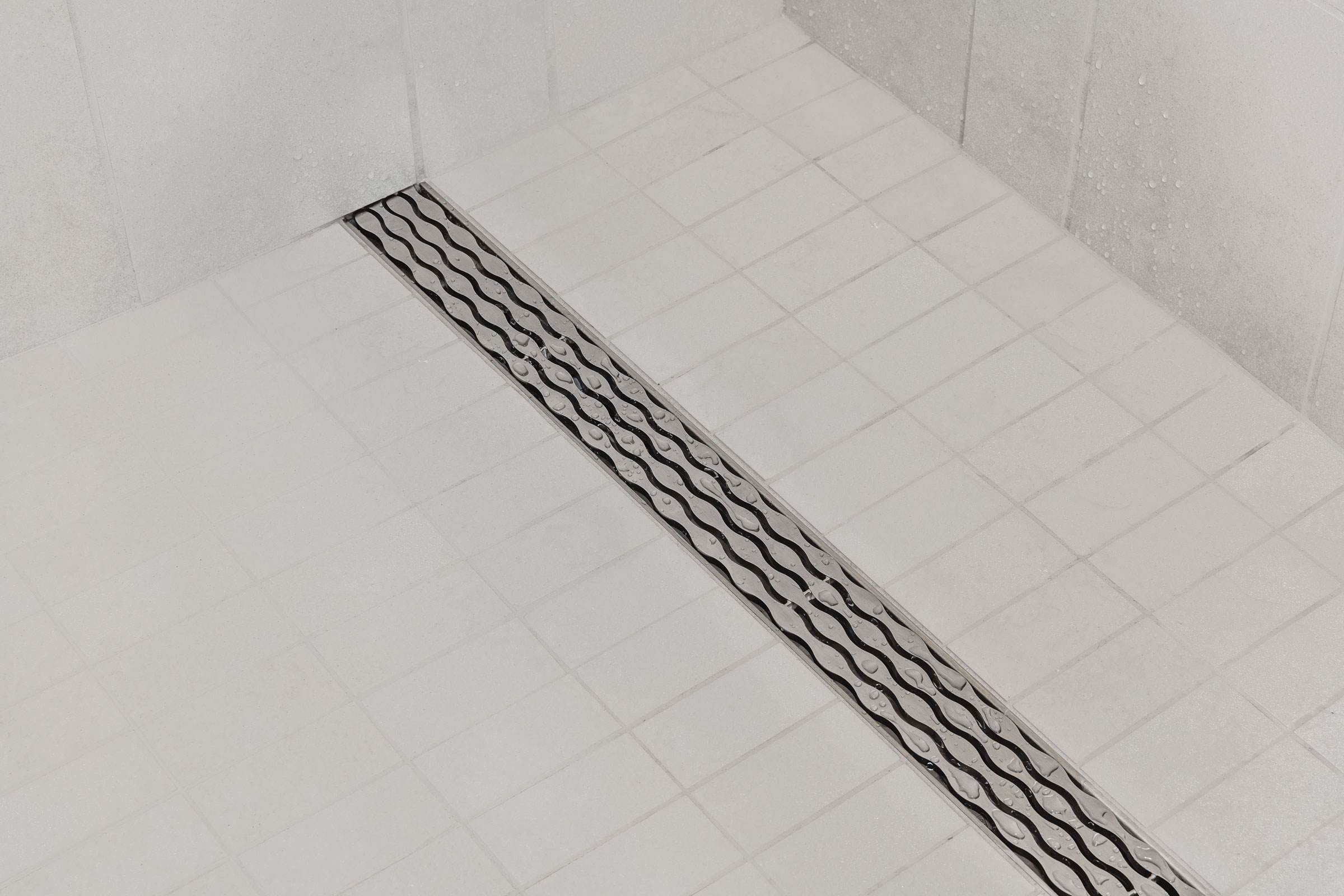Story at a glance:
- Dealing with existing conditions of plumbing stacks, waste lines, and supply lines is a challenge of hotel renovation.
- Finish-matching can also be challenging, but choosing a drain system with various finish options helps.
- The QuickDrain ShowerLine linear drain system can connect the drain to existing waste pipes.
Architects must meet the expectations of thousands of guests who visit a hotel, not to mention the expectations of hotel ownership groups. While they primarily focus on a building’s functionality and beauty, many challenges come into play related to shower plumbing system design.
Although architects are not responsible for engineering plumbing systems, the shower design and system choices are usually determined more by the architect or the interior designer, whose specifications tend to be driven by the owner-developer’s preferences.
That said, our team gained some insight into specifying shower plumbing systems for hospitality architecture—directly from the source. Below we detail six helpful tips and considerations from Jeff Connell, one of the principals of designONE Studio, a full-service design group with a specialized understanding of hotel and hospitality design.
1. Synergy Between Design and Installation
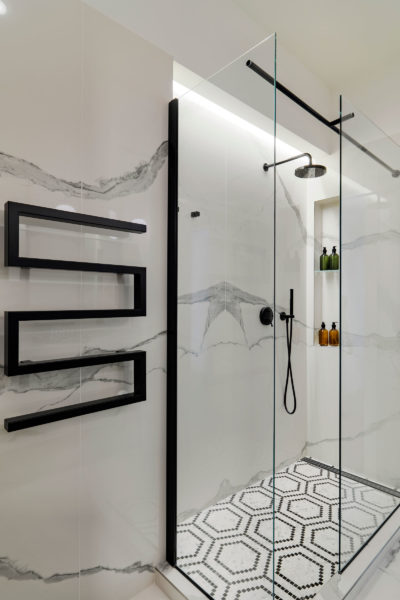
This art deco shower features a linear drain in polished black. Photo courtesy of Oatey
One of the biggest challenges during a hotel renovation, according to Connell, is dealing with the existing conditions of plumbing stacks, waste lines, and supply lines.
“What we want on the side the guests see doesn’t always easily translate to the construction side, especially when the plumbing subcontractor has to connect into the existing stack system,” he explains. “That’s where plumbing can get complicated in hospitality renovations.”
Connell’s suggested solution? A fully functioning model room, or rooms, where everything gets installed to confirm the design solution, while also addressing possible construction issues that may arise. Using one of the firm’s many large hospitality projects as an example, Connell says the best way to stay ahead of plumbing issues is to complete at least one model room, even two or three if budget and time allows, especially for larger hotel resorts.
designONE Studio participated in design of the model rooms along with the interior designer during the complete revitalization of the iconic Don Cesar in 2020, where the owner, Host Hotels and Resorts, remodeled 241 guest rooms and 36 suites. “We recommend a model room for these types of renovations, especially for a luxury hotel like the Don Cesar,” he says.
“Instead of doing the documents for all 277 rooms and then sending them out to bid, we did the documents for only two or three model rooms,” he continues. The model rooms offer the opportunity to take a closer look at not only how to plumb the guest rooms, but also to ensure furniture and finish selections meet expectations.
“We do a full-room renovation in those two or three rooms, working hand in hand with the general contractor who in turn works with the plumbing sub and the tiling sub,” says Connell. “That’s an easy way to determine any issues you may have, rather than running into these issues at a later stage.
“With a model room, you run into the issue once rather than having it come up 277 times.”
Connell adds that designONE Studio will involve their plumbing engineer to work through any plumbing issues, such as the inability to connect a drain to a particular waste pipe.
2. Breaking Concrete to Access Plumbing from Below
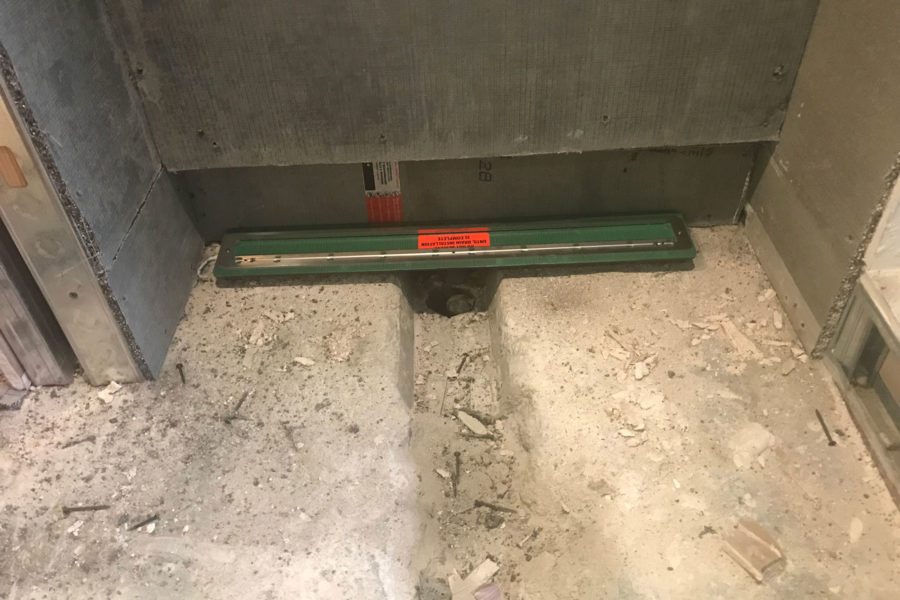
Photo courtesy of Oatey
Construction crews will often run into challenges when it comes to penetrating the floor or concrete slab to install plumbing lines or shower drains. Connell says architects must consider these challenges when selecting shower systems, especially shower bases and drains.
Many older hotel buildings are constructed with concrete slabs that contain post-tension cables. Core-drilling them could compromise a building’s integrity. Connell also mentions that some plumbing system installations require access from the ceiling below.
“When your guest room is on the first floor, above a lobby, restaurant, or a meeting room, it gets difficult to access,” he says. “That’s one of the benefits of the shower system we selected for the Don Cesar project.”
designONE studio specified the QuickDrain ShowerLine linear drain system for the Don Cesar because they could connect the drain to existing waste pipes. QuickDrain linear drain bodies offer a side waste outlet that accommodated the exact plumbing situation at Don Cesar and enabled the construction team to connect the existing two-inch solid waste pipes to the linear drains in each shower.
While the plumbing contractor and subcontractors handle shower system installation, architects decide whether to install a solid surface pan, a traditional mud bed, or an alternative system like the QuickDrain Showerline used at the Don Cesar. Again, the building owner usually drives the architect’s design decisions.
“For example, at the Don Cesar, they did not want a solid surface pan,” he says. “They wanted a more traditional tile, so that’s another aspect that drove us to specify the QuickDrain system, especially because of the tile-ready PET pans.”
Made of extruded rigid PET (polyethylene terephthalate) plastic foam, QuickDrain’s pre-sloped shower pans can be easily cut and pieced together without costly customization, eliminating the time and labor to float the typical, pitched-concrete shower base.
3. Go for the Most Efficient Systems
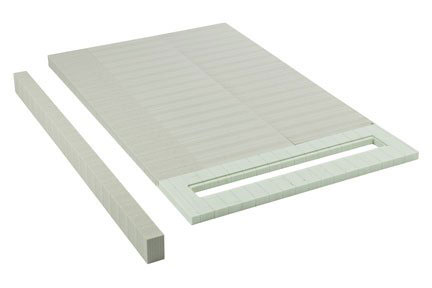
Shower panel kit. Image courtesy of Oatey
Connell says even if hotels aren’t going after LEED or green status, his firm endeavors to design and specify sensible, environmentally friendly products when possible.
“If we can use recycled materials, we will. But one thing we especially focus on is to specify products that can be domestically sourced, so that the transportation cost is much less. So we’re not transporting products on a ship or container, but instead in the back of a truck which helps from a green initiative standpoint,” he says. “But, bigger picture, this also helps from a scheduling standpoint. Time is money, and every time they’re late on a product, that’s a room the hotel has to delay turning over for revenue.”
Connell says installation efficiency is another major consideration. “That’s what drew us to the QuickDrain system—not only the ability to save some connections below the slab, but also the quick turnaround for putting in a tile bed versus a traditional mud bed system that would have taken two to three days.
“The QuickDrain system is cut, shaped, formed, and then glued on-site,” he says. “Then you do a thin set right on top of the PET pan.”
4. Finish Matching
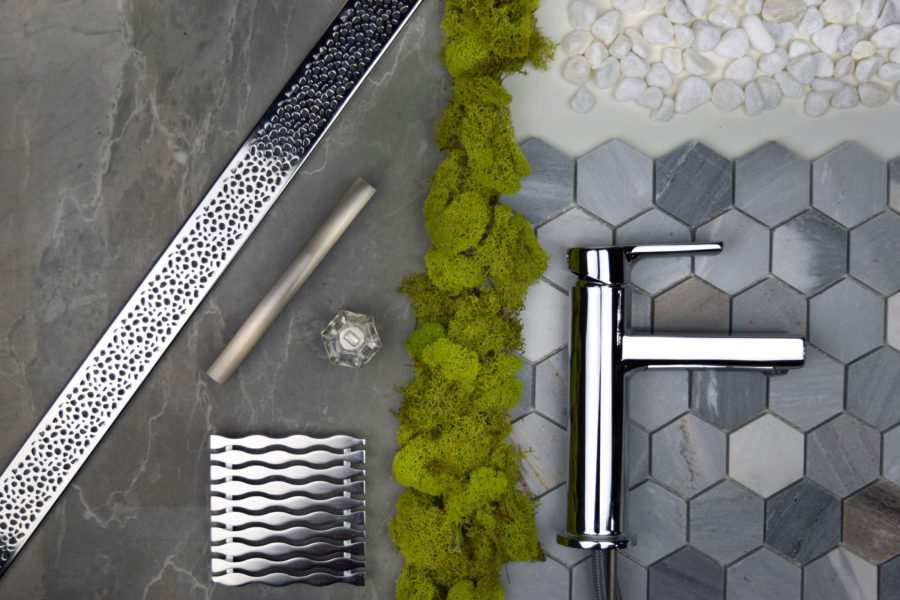
Finish matching. Photo courtesy of Oatey
While most plumbing-related products are behind the wall, drain covers and strainers are visible in front of the wall. Connell says finish-matching can be challenging and suggests choosing a drain system with various finish options.
“For the Don Cesar we decided to stick with satin chrome for the drain cover because we were worried about hard water stains showing up all the time on the drain,” he says. “The challenge comes when you specify higher-end plumbing fixtures from plumbing manufacturers, like Kohler’s Kallista lineup.”
“Finishes like rose gold, matte black, and satin nickel don’t always translate from product to product, so I prefer to keep it simple and stick with polished or satin chrome.”
5. Installation of Innovative Products
Connell shares a challenge that uniquely relates to newer, more innovative shower solutions like the QuickDrain system. “When you specify such a specific product, you have to be sure the general contractor uses a subcontractor who is on the approved vendor list or someone who is trained on that particular system.”
Connell says some contractors push back when installing a newer, unique system. “If you can find someone who’s a preferred vendor, that’s ideal. But a lot of times if you can’t. In those instances, you want someone willing to do some training.”
A great time to take care of training is during the model-room installation, he says. QuickDrain routinely conducts on-site, model-room training before the start of a project, performing a full installation to support the general contractor, as well as any subcontractors.
“Training is essential because it provides the crew with a solid grasp of how a system works, while making sure they’re installing it, one, for performance and, two, to make sure the warranty can be maintained.”
6. Adhering to Plumbing Codes and Regulations
Connell says some jurisdictions may not be as sophisticated as larger metropolitan areas like New York or Atlanta. Hence, his firm takes care to run plumbing by the local plumbing inspector.
“We always recommend permitting the model room, even though it’s only one room,” he says. “That way an inspector can come out, and if they see something or say something like: ‘I don’t like the way a system drains,’ we catch it then, rather than being hit with it for the overall job.”

